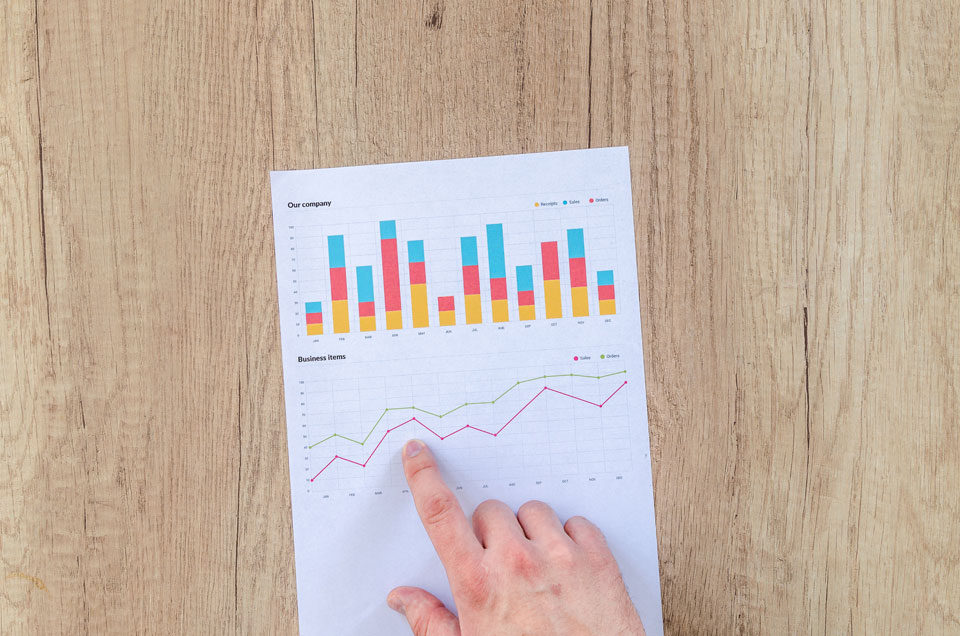Gross profit margin - What is the gross profit margin?
Gross profit margin refers to the amount of profit made from sales after subtracting the cost of goods sold
View your profits and losses in a click with online accounting & invoicing software like Debitoor. Try it free for 7 days.
The gross profit margin can be a very useful number for understanding how well a business is faring financially as it removes the cost of the amount necessary for day-to-day operations - in other words, what’s keeping your business running - to provide you with a clear margin.

Calculating and tracking the gross profit margin provides insight into the health of a business over time. It can be a useful number not only for the business owner and manager, but also for potential investors.
What gross profit margin means
The gross profit margin not only tells you how much your business is making after operating costs, it also is a general understanding of how efficient the business is at creating the products to be sold.
This margin can then be compared to competitors to see how well your business is faring in your particular market.
Once a business establishes their gross profit margin, it should remain relatively stable. Variations in the margin are most often caused by changes to the production process (for example, automation of certain parts of production, changes to the pricing of products, or regulation changes that affect production).
The gross profit margin can also be an indicator of how well a business can be scaled up. It can show investors whether the business would still be profitable at different production levels.
How to calculate the gross profit margin
The gross profit margin can be calculated with an equation that divides the revenue less the cost of goods sold by the total revenue:
Gross Profit Margin = (Revenue - Cost of Goods Sold) / Revenue
This equation should provide you with an answer that can be understood as a percentage. The percentage gives you an understanding of how much on each pound made is considered profit.
Example of gross profit margin
To better understand the equation, let’s take a look at Jenny’s Bakery. Jenny has just launched her business but has had a good year. She made just over £148,000. However, her operating costs include some expensive machinery and ingredients so they cost her about £79,000 each year. Her gross profit margin equation would therefore be something like this:
Gross profit margin = (£148,000 - £79,000) / £148,000
The result would be: 0.46, or 46% gross profit margin. This profit margin means that for each pound spent to run her business, she earns half of that in profit. Jenny’s gross profit is £69,000, which can be put toward her business such as utilities, marketing, rent for her shop space, etc.
Gross profit margin and Debitoor
In order to calculate your gross profit margin, you must have accurate numbers. This means keeping track of both incoming and outgoing payments to your business. Once you have the figures spent on suppliers, as well as records of your revenues, your gross profit margin will be easily calculable.
To stay on top of these numbers, accounting and invoicing software like Debitoor makes it easy to record payments no matter where you are with the Debitoor Android app or Debitoor iOS app.
